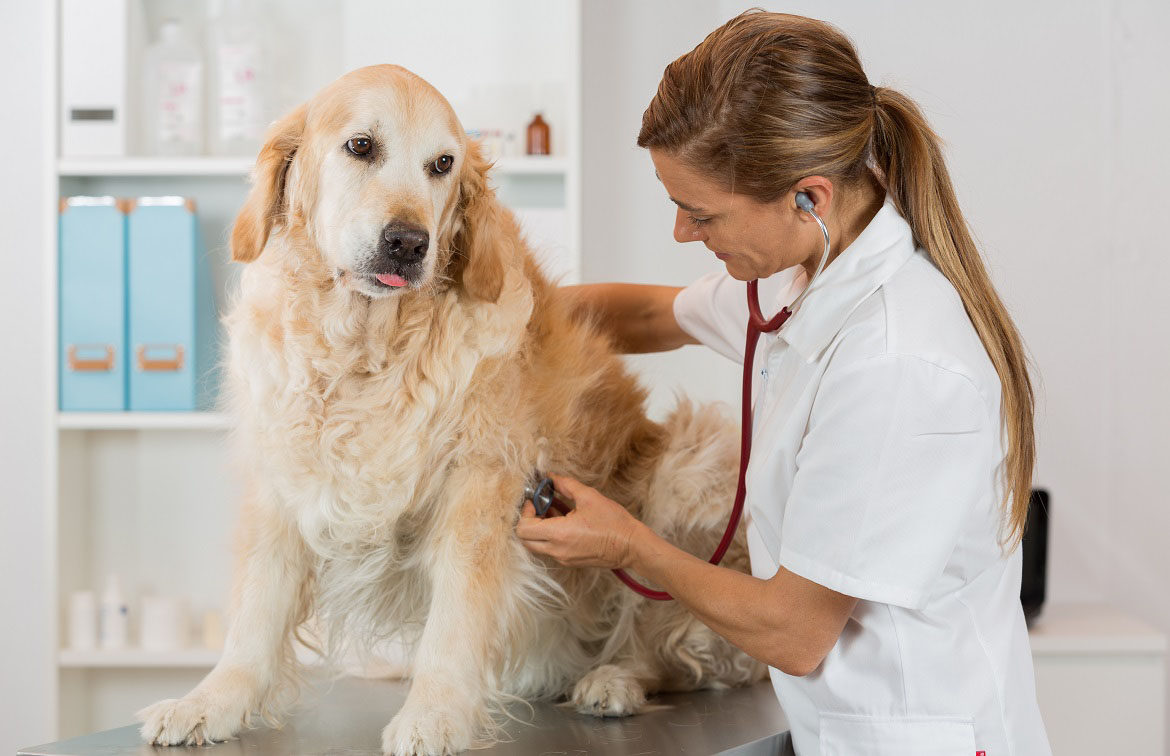The American Veterinary Medical Association is proud to say that as animal medicine continues to improve, pet’s lives continue to get longer. But this brings on brand new challenges for dog owners. You may have finally mastered puppy training, and gotten into good habits during your dog’s adult years, but caring for a senior dog can be a whole new ball game. On top of that, each dog ages differently and comes with their own set of potential health issues and ailments. How can you make the canine aging process smooth for both of you? We’ve come up with 4 tips to keep in mind as your dog heads into their golden years.
4 Ways To Care For Your Senior Dog
1. Increase Your Visits to the Vet
Your dog may not want to hear this, but as they age, they should be seeing the veterinarian more often. Annual vet visits are perfect for young and healthy dogs, but senior dogs may need to see the doctor twice a year. Talk to your veterinarian about when you should start increasing visits.
Frequent visits to the vet provide an opportunity for early detection of any health problems your dog may be experiencing. The AVMA states that exams given to senior pets are often more in-depth than those given to younger dogs. Often these exams will include dental cleaning, blood work, and specific examinations that check for common diseases in older dogs.
Many of the diseases that dogs develop in their old age are similar to diseases humans develop. Cancer, heart disease, kidney disease, liver disease, diabetes, joint disease, senility, and simple weakness are all common problems in aging dogs. If you suspect your dog may be suffering from any of these ailments, always consult your veterinarian first. Make an appointment, and have your dog checked out. Your veterinarian will be able to make a proper diagnosis and provide you with the necessary canine-friendly medications.
2. Watch Your Dog’s Behavior
When humans feel unwell, we are able to vocally express our physical pains and ailments. Dogs are unable to communicate with us through verbal language, but they can tell us a lot through their behavior. As your dog ages, start to pay close attention to their daily behavior. Keep an eye out for abnormalities and differences.
The AVMA lists several behavioral changes that owners of senior dogs should watch for, including disorientation, decreased interaction with humans, increased anxiety, and house soiling. If these or other behavioral changes are not consistent with your dog’s usual nature, it is wise to visit a veterinarian for a check-up. These behavioral differences can be subtle, so be sure to watch closely.
Other more obvious behavioral changes include decreased appetite, increased thirst, vomiting, and physical weakness. These ailments also can be a sign of illness in your senior dog. Consult with your veterinarian if you are concerned by your dog’s behavior.
3. Change the Exercise Routine
It’s common for senior dogs to experience increased physical weakness or even to suffer from arthritis. But one of the most important things you can do for your dog as they age is to maintain a moderate exercise routine.
If you’ve exercised your dog regularly their whole life, you may start to notice them slowing down naturally with age. Pay attention to this, and decrease the level of activity for your pup. Perhaps you used to climb mountains together? Take flat walks in the woods instead. Were your walks with your dog over an hour long? Scale them back. Small changes like this allow your dog to maintain a healthy level of activity without overexerting themselves.
In an article by NPR, Nicholas Dodman of the Cummings School of Veterinary Medicine recommends moderate exercise due to potential heart and lung deterioration. But the key to senior dog exercise is moderation. Dodman emphasizes that maintaining a healthy weight for your senior dog is important. Excess weight can put a strain on your dog’s already tired joints. Short walks, swimming, and rolling the ball during fetch instead of throwing are all great ways to moderate your dog’s activity.
4. Make Your Home Senior Friendly
Just like senior humans, modifications to the home environment can make a huge difference in the quality of life for your senior dog. One major thing to stay aware of is temperature. Senior dogs become very sensitive to temperature extremes. It’s important to keep your home temperature in a comfortable state. You should also monitor your dog’s time spent outdoors. Too much exposure to the extreme cold and extreme heat can be harmful to a senior dog.
Another factor to consider for your dog is general access to their basic needs. If your dog has trouble with their joints and general movement, make sure their water and food bowls are on the first floor. If your dog’s favorite couch or bed is too high for them to jump to, a small set of steps can be very helpful. You may want to also consider adding a ramp to the entrance of your home if the entryway stairs are steep. These modifications are similar to those we may provide for senior humans. Talk to your veterinarian if your dog is having specific difficulties.
Remember, aging is as much a part of life for dogs as it is for people. The best thing you can do for your friend is to embrace the process. You know your dog best. Make them as happy and comfortable as they can be in their old age. And continue to enjoy the journey.

